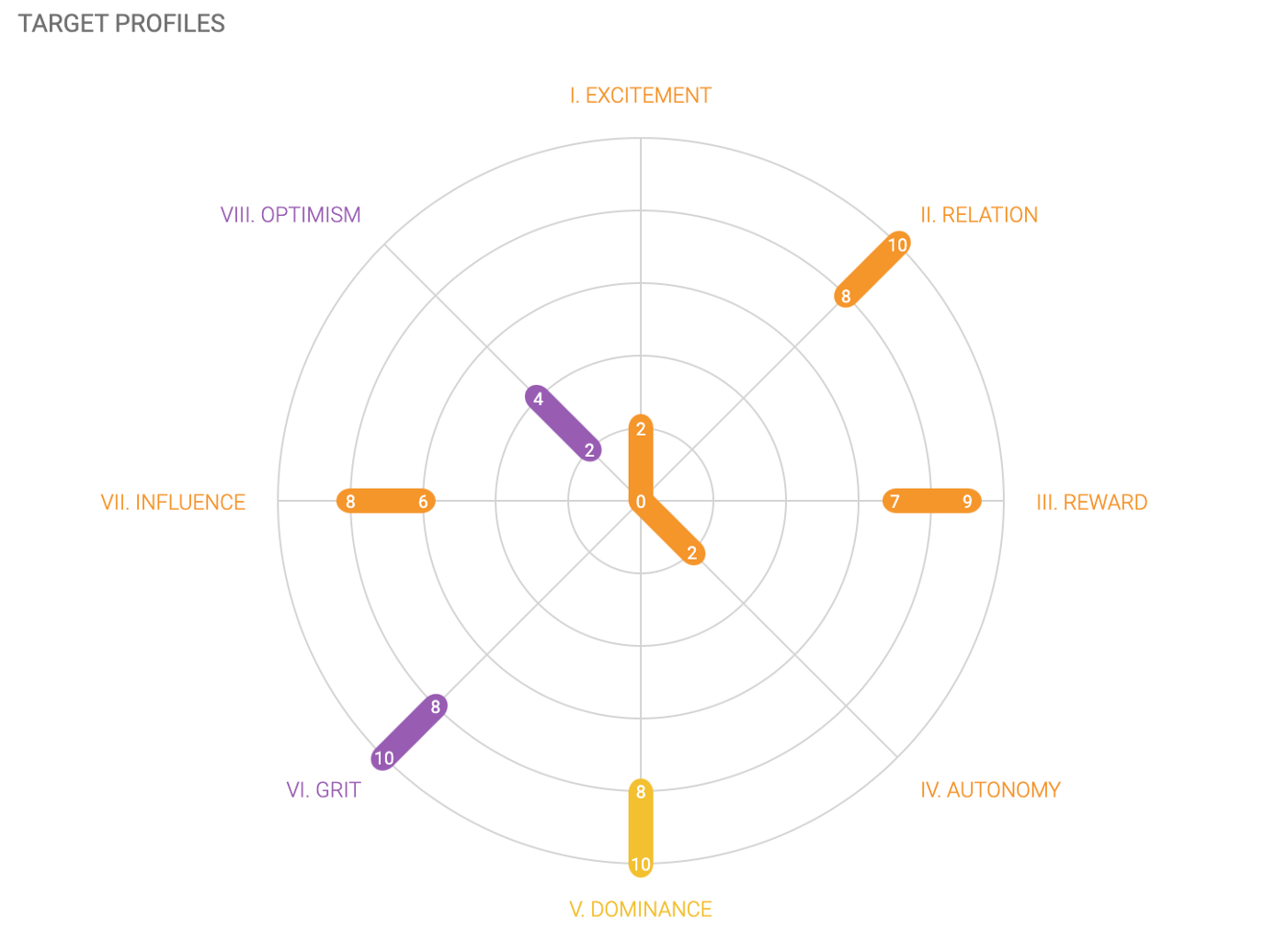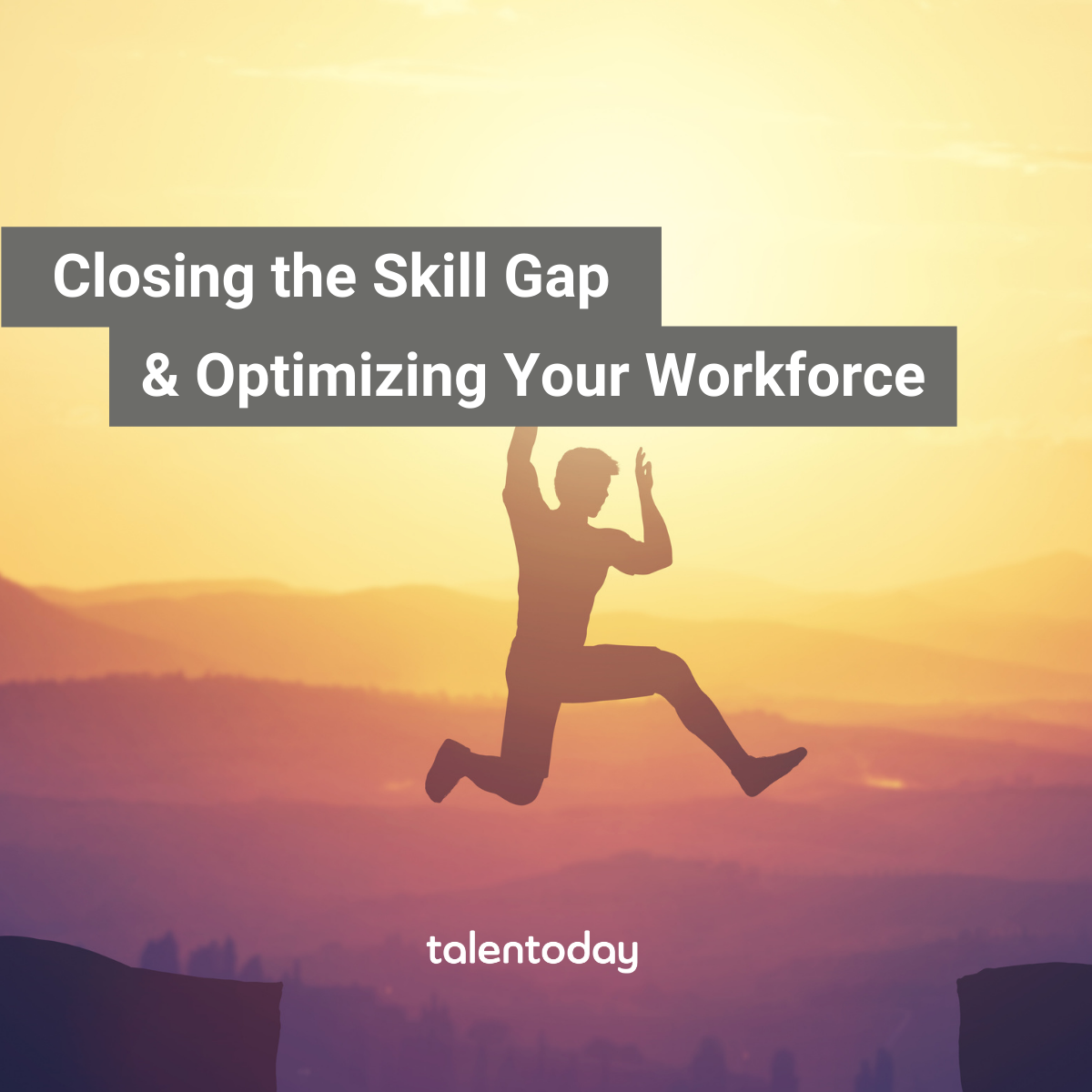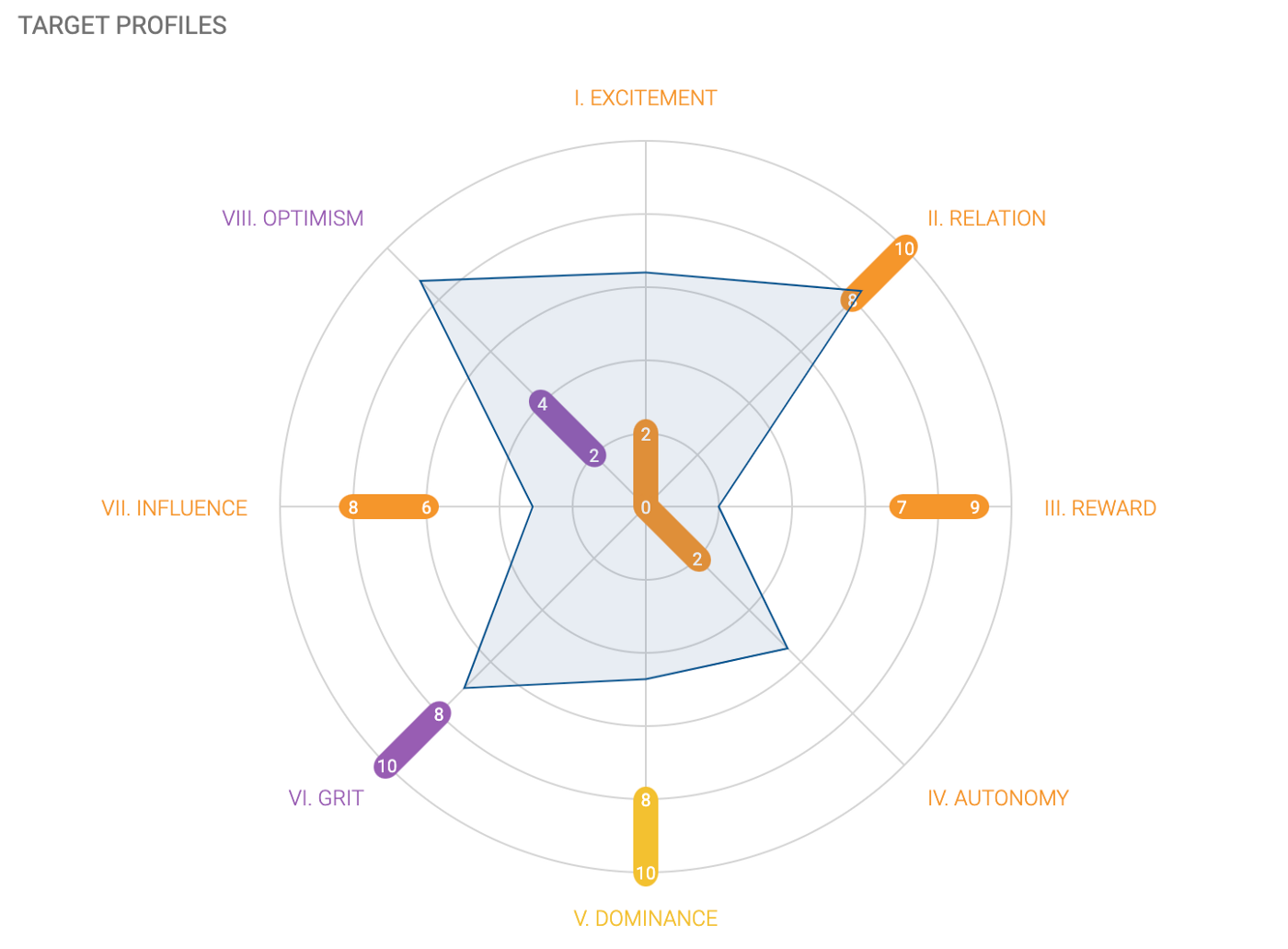Why Upskilling is Crucial for Hybrid Teams

There were a lot of things I didn’t know I could do before COVID-19 upended the way we live and work. For example, I already knew my way around the kitchen, but I had no idea I could make tasty banana bread! I also learned how to cook a spicy jambalaya, brew my own beer and, when I wasn’t eating or drinking, I figured out how to use a 35mm film camera to expand upon my interest in photography. In my home life, I would call these achievements “little victories.” Little did I know that, were I to do the same sort of expanding of my talents in the workplace, it would be known as “upskilling.”
Upskilling is the process of using training and education to deepen an employees’ abilities within their area of expertise. This is slightly different from reskilling, which is when an employee is trained on an entirely new skill set in order to move into a different role. Instead, upskilling is all about building upon an employee’s existing skills in hopes of enhancing their impact on an organization.
While my personal upskilling may not have major implications for the workplace (even if some morning meetings are greatly improved by the addition of banana bread), upskilling has the potential to reshape the way organizations recruit and develop talent – especially as teams embrace hybrid work models.
The Skills Gap Continues to Expand
As the modern workplace undergoes unprecedented changes, existing skills gaps across all industries are widening. While employees may have entered into the workforce with skills that were in high demand at the time, the rate of digital transformation has increased sharply in response to the COVID-19 pandemic, leaving many of these employees behind. According to McKinsey & Company, 87 percent of companies say they have skills gaps or expect to within a few years. Jobs are changing fast, and employers and employees are struggling to keep up.
There are a few options at organizations’ disposal for dealing with these gaps in needed competencies. In less competitive hiring markets, one appealing course of action would be to bring in new talent to fit the needs. However, today’s recruiting landscape is characterized by a dwindling supply of talent and an aggressive influx of demand from employers. These conditions have forced many employers to look inwards when determining how to address their skills gaps in the years ahead.
Employees are Looking for a Change
To exacerbate the problem even further, this expanding skills gap comes at a time when workers are beginning to quit jobs at extraordinary levels. In April 2021, the number of employees leaving their companies spiked to approximately 4 million according to the Bureau of Labor Statistics (BLS), leading many to refer to the phenomenon as, “The Great Resignation.”
In truth, does anyone ever really want to be forced to find a new job? In the same way that employers would rather retain talent than search for replacements, employees are hoping for reasons to stay at their current organizations before making a drastic move. Take the results of a recent PwC survey into consideration. Their findings show that the majority of workers are open to change, citing that 40 percent of respondents successfully improved their digital skills during the pandemic and over 90 percent of those who adapted to remote work would prefer to continue working in this style of environment. On top of that, 77 percent of workers are ready to learn new skills.
The issue is not a lack of willingness to learn on the side of employees but, rather, the lack of opportunities for upskilling offered by employers. However, if organizations are serious about closing their skills gap and retaining employees in the face of an explosion of resignations, it’s time to make learning and development programs a real priority.
Make Upskilling a Priority
While employers seem to recognize the problem they face, there remains a gap between this recognition and an understanding of how to address the underlying causes. According to a 2021 survey conducted by Gartner, 68 percent of HR leaders cited building critical skills as a top priority. However, more than 30 percent of the same leaders say that they don’t know what skills gap their employees have, how to effectively integrate learning into employee workflows or can’t create skill development solutions fast enough to meet evolving skill needs. In short, employers know there are skills gaps to address, but are uncertain where they lie or how to fix them.
The way forward is two-pronged, based first on assessment then solidified with commitment:
- Assessment: First and foremost, organizations need to utilize tools to empower them to better evaluate their candidates and employees. Knowing the current capabilities of a team is important, but identifying the potential for growth can be critical. While necessary technical skills can be assessed through traditional means, such as verifying education and certification backgrounds, this must be coupled with a deeper understanding of soft skills. Scientifically-based soft skills assessments can provide insight into an individual’s capacity to upskill into a role over time.
- Commitment: Once the workforce has been properly assessed, organizations must then approach upskilling differently than standard onboarding and other job-specific training opportunities. Instead, upskilling opportunities must be treated like the valuable benefits they are. As noted in Fast Company, “For the top tier of talent, upskilling is emerging as a must-have employee benefit, like a retirement saving plan, employer subsidized health care, or paid time off.” In other words, these education programs cannot be haphazardly inserted into existing workflows. Rather, time and space must be set aside for employees to truly feel as though upskilling is a top priority.
As the way we work continues to change, teams are struggling to keep up. However, by devoting time and effort to upskilling programs, there are win-win solutions available for employers and employees alike.
Are you ready to evaluate your team’s soft skills to determine upskilling opportunities? Discover the powerful science of people analytics that drives MyPrint by clicking here.
Closing the Skill Gap & Optimizing Your Workforce
We can all agree that the only constant is change, right? For example, look at your life 6 months ago and compare it to now. Pretty different, isn’t it? Okay, maybe that’s not a fair example because of the whole “global pandemic thing”; but pandemic aside, things are constantly evolving in all aspects of our lives. Your phone software is continuously being updated even if you have the same phone. Fast food restaurants are using touch screens to place orders. Every new model of car has a button that does something our cars didn’t do before. We wear masks to go to the grocery store and we are all finally getting the personal space we desire (let’s be honest, we can’t really push the whole pandemic thing aside).
It might seem like technology is taking over the world, but remember that behind every new technology are the humans that created it. We shouldn’t be competing with technology but rather learning how to coexist with it. Using technology to improve our processes and harnessing our human power in more efficient and effective ways is how we will beat the robots! (…and stay ahead of the skill gaps!)
Internal Mobility
Before we get too far into this blog post, I want to make sure we’re all on the same page about Internal Mobility. This is when an organization is recruiting for positions within their current workforce¹. For example, if there is a need for a new position within an organization or if someone leaves their role then the candidate pool would come from individuals already working at that organization. There are so many benefits to Internal Mobility, both economical and cultural. I suggest you check out the webinar recording for that!
“But what if the new role requires skills that nobody else in the organization possesses?”
That’s what our blog post is really about today: closing those skill gaps!
Upskilling and Reskilling
Upskilling is used when you are taking the skills that a person already has and improving on those skills². A great example of this is technology. Although someone might be proficient in Microsoft Excel, for example, they could go through courses that help them utilize more tools and functions in Excel that they did not know about before. When upskilling an individual within an organization, the goal is to keep them in their same position while improving their performance and adapting to changes within their environment.
Reskilling on the other hand deals with teaching an individual completely new skills². These can be hard or soft skills, and the goal is to provide an employee with the tools needed to move into a brand new position.
How do soft skills play a role in this?
As you know we are all about soft skills here at Talentoday! If you thought we were going to have a blog post that didn’t mention soft skills then you, my friend, were very wrong. Did you know that 94% of employers consider soft skills to be a key element of success in the workplace?³. This isn’t to say that hard skills are not important — just that we’re going to focus on our soft skills today.
Think about your current position. What was it that got you that role? It might be your education, your knowledge of a specific technology or product, or maybe your prior years of experience. Now think about what makes you successful in your role. These are probably going to be your soft skills: your ability to communicate, think critically, pay attention to details, or make decisions. This is why soft skills are so important; they play a huge role in one’s success in the workplace, and they sometimes go unnoticed!
Target Profiles
Assessing your workforce is the best way to keep up to date with the skills that you currently possess and also the skills that you need growth in. Our MyPrint assessment and Talentoday Manager platform are a great way to assess and visualize your workforce’s soft skills.
Within the Talentoday Manager platform we have a Target Profile feature to help visualize the 8 most distinct personality and motivation traits for a group of individuals. This can be a custom group of people or based around a single job title or function. Below is what the Target Profile for Sales looks like, which is one of the Target Profiles that is built into the Talentoday platform.

Now let’s put this to use — let’s say that I wanted to move into a Sales role. We could then match up my MyPrint results on top of the Target Profile for Sales to see the areas where I have the biggest gaps.
Right away we can see that I am a 47% match for a Sales profile. Does this mean that you should lose all hope in my ability to be a sales person? Not at all! This Target Profile should be screaming opportunity at you! One area of concern would be that I am very high on Optimism (shocker, I know). Knowing this, I would probably need some training on when, where, and how to use my positivity. I wouldn’t make any sales if I responded to clients’ concerns with “It’s fine, everyone experiences bumps in the road! You are still profiting though so you are doing great!” (Sorry to all of the sales people out there who just panicked a little bit).
When an employee is moving into a new role it is key to understand what skills they possess, as well as the talent gaps they need to fill, in order to set them up for success. Just because someone isn’t a 100% match for a new position does not mean that they are a lost cause. People are capable of learning and growing not only with their hard skills, but with soft skills as well!
In conclusion…
Technology is taking over the world. Okay, maybe not completely. Technology is constantly changing though, and with that comes a change in our workforce. By understanding the skills that your workforce currently possesses you can stay on top of the skill gaps that are sure to come your way. By investing in your people, you will be able to optimize your workforce to be the most successful that they can be!
If you’d like to view our webinar on Upskilling and Optimizing Your Workforce, or if you’d like more information about Talentoday, please visit www.talentoday.com or contact our experts at contact@talentoday.com.
Sources
1 Whelan, P. (2019). Why internal mobility is key to building the workforce of the future. HR Technologist. https://www.hrtechnologist.com/articles/recruitment-onboarding/why-internal-mobility-is-key-to-building-the-workforce-of-the-future/
2Agrawal, S., Poplawski, P., Reich, A., & De Smet, A. (2020). Beyond hiring: How companies are reskilling to address talent gaps. McKinsey & Company. https://www.mckinsey.com/business-functions/organization/our-insights/beyond-hiring-how-companies-are-reskilling-to-address-talent-gaps
3Chelovechkov, A., Lefkowitz, R., Spar, B., & Van Nuys, A (2019). 2019 Workplace Learning Report. LinkedIn Learning.




